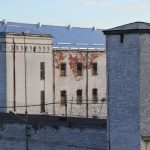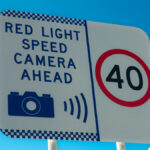Combating Radicalisation in Schools

Australia was rocked by the recent tragic shooting of police accountant Curtis Cheng by 15-year-old high school student Farhad Jabar.
The incident has stuck in the minds of many for various reasons – it involved the death of an innocent man, it occurred in broad daylight – but most notably, because the perpetrator was a 15-year-old Muslim boy.
Islamic and political leaders have been quick to condemn the incident – and in the week that has followed, a number of raids have been conducted, with four young people being arrested and detained by police, including a 16-year-old schoolboy who was walking to school.
Now, Premier Mike Baird wants to take further action to prevent impressionable young people from committing acts of violence. In an attempt to combat radicalisation, he has proposed to educate young people about extremism in schools.
The Opposition supports the idea, calling for a parliamentary inquiry into radicalisation in schools.
Aussie Schools: A Breeding Ground For Radicals?
Prior to last week, the mere thought of high school students committing an act of terrorism might have seemed far-fetched.
But since the incident, it emerged that the young perpetrator had been attending voluntary lunchtime prayer sessions – and had been mixing with other young people at his school who are alleged to have supported militant groups.
A media outlet has reported that one of Jabar’s fellow students faced court after driving past a Catholic school in 2014, yelling death threats and waving the Islamic State flag out the window.
Another student from the school was arrested by police last week after he published a number of offensive posts on social media referring to the incident.
But according to the media, radicalisation is not unique to Arthur Phillip High School. In July this year, it was reported that a student at Epping Boys High School was ‘preaching radical Islam in the school yard,’ while others from the school were reportedly discussing the Islamic State. An Islam prayer group run at the school has since come under investigation.
Concerns have also been raised about a similar prayer group at East Hills Boys High after it was reported that the so-called ‘Ginger Jihadi’ Abdullah Elmir, who is seen in several IS promotional videos, attended the school.
With incidents like these being reported in the media – and politicians constantly calling for investigations and inquiries into prayer groups, some may be forgiven for thinking that indoctrination into terrorist groups at high schools is a common occurrence.
Is An Inquiry Needed?
The Parramatta shooting triggered calls from Deputy Opposition Leader Linda Burney for an inquiry into radicalisation in schools. According to Ms Burney, the inquiry would examine ‘the current regulation of prayer groups, ways to prevent radicalisation and how to better support teaching staff and students,’ because ‘we need to know how the education department is managing the risks now and how it can do better in the future.’
But Ms Burney also highlighted the fact that the government’s last audit into prayer groups in schools ‘found nothing to report to police.’
The audit’s only concrete finding was that some schools had failed to follow guidelines which required students to seek parental permission before engaging in the groups.
Promoting Islamophobia?
While many might support the government’s crackdown on Islam prayer groups in schools, others have cautioned that it will do little more than increase discrimination against Muslims – especially Muslim kids – at a time when followers of the Islam faith already face hostility in everyday life.
One teacher, Reem Allouche, has started a petition against the prayer group audits, saying that it allows the government to spy on children in an already institutionalised Islamophobic climate.
Other teachers question the benefits of audits, with some saying that the current media attention on Islam is causing social isolation in public schools, and leading young Muslims to feel even more excluded. According to teacher Toni Pikos-Sallie, who works at an Islamic school, such an environment creates a ‘dangerous vacuum’ which can promote radicalisation.
Pikos-Sallie also points to cases of other young people – notably Melbourne schoolboy Jake Bilardi – who became radicalised by accessing certain websites on the internet. She notes that Bilardi did not become radicalised at school:
‘Jake was not radicalised by his family, nor was he radicalised at the local mosque, and he was not exposed to radical ideologies at school. Jake’s ‘teacher’ was the Internet, and together with social isolation, this proved to be a fatal combination.’
Tragedies such as the death of Curtis Cheng are always bound to trigger knee-jerk reactions, and it is easy to point the finger at an identifiable group. But in the wake of the killing, we must remain mindful of our fellow young Australians, no matter their faith, and ensure that we promote acceptance rather than animosity, discrimination and alienation.






